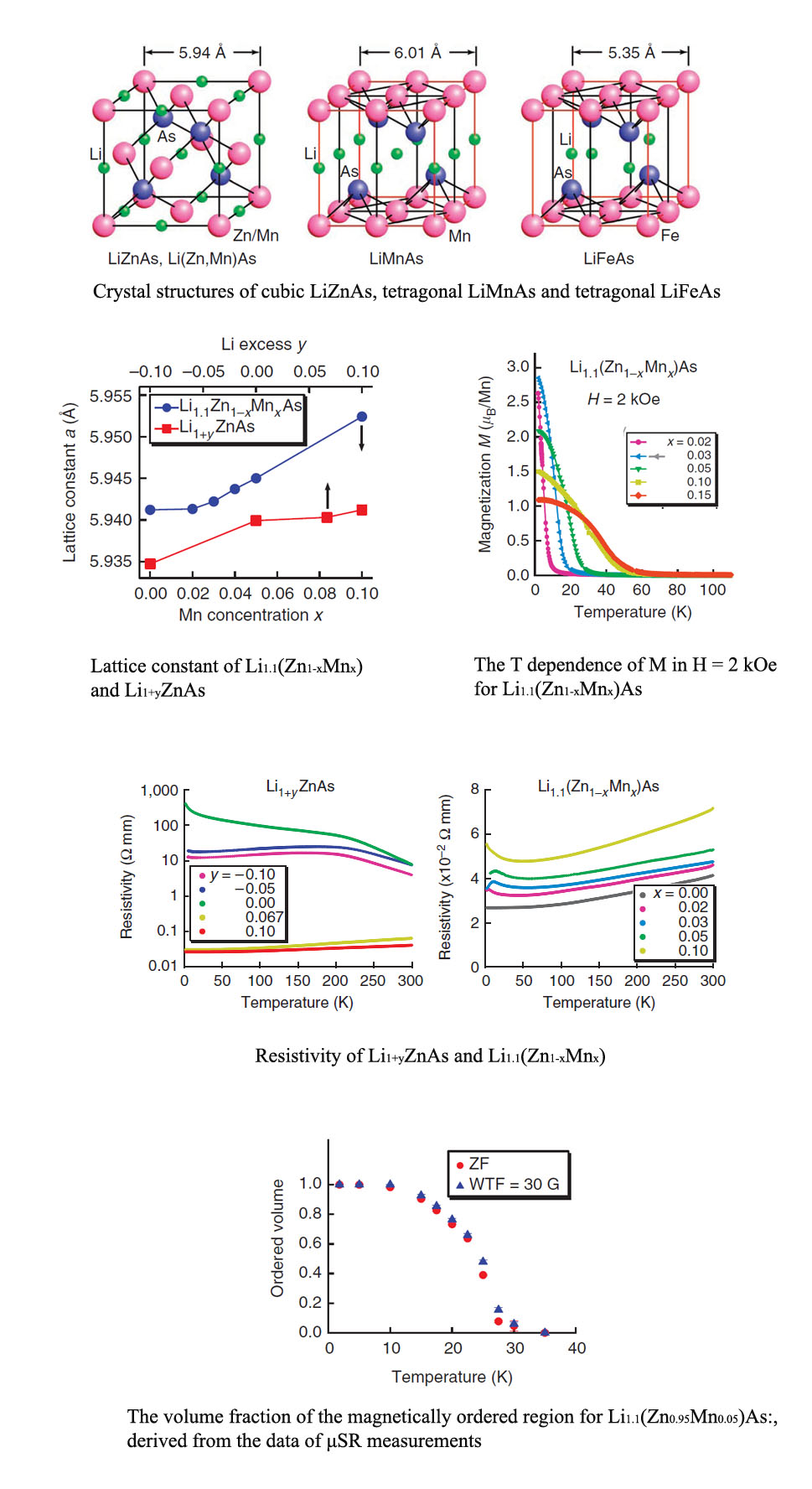新一代I-II-V稀磁半导体材料:Li(Zn, Mn)As
(Li(Zn,Mn)As as a new generation ferromagnet based on a I-II-V semiconductor)
Z. Deng, C.Q. Jin, Q.Q. Liu, X.C. Wang, J.L. Zhu, S.M. Feng, L.C. Chen, R.C. Yu, C. Arguello, T. Goko, F.L. Ning, J.S. Zhang, Y.Y. Wang, A.A. Aczel, T. Munsie, T.J. Williams, G.M. Luke, T. Kakeshita, S. Uchida, W. Higemoto, T.U. Ito, Bo Gu, S. Maekawa, G.D. Morris, Y.J. Uemura
Nature Communications 2:422 (2011)
Highlights: 中国科学院(CAS)(English version) 、 中科院物理所(IOP)以及国家自然基金委
入选中科院2012年年度报告(英文版)(P25)、(中文版)(P15-16)
In a prototypical ferromagnet (Ga,Mn)As based on a III–V semiconductor, substitution of divalent Mn atoms into trivalent Ga sites leads to severely limited chemical solubility and metastable specimens available only as thin films. The doping of hole carriers via (Ga,Mn) substitution also prohibits electron doping. To overcome these difficulties, Masek et al. theoretically proposed systems based on a I–II–V semiconductor LiZnAs, where isovalent (Zn,Mn) substitution is decoupled from carrier doping with excess/deficient Li concentrations. Here we show successful synthesis of Li1+y(Zn1-xMnx)As in bulk materials. Ferromagnetism with a critical temperature of up to 50 K is observed in nominally Li-excess (y = 0.05–0.2) compounds with Mn concentrations of x = 0.02–0.15, which have p-type metallic carriers. This is presumably due to excess Li in substitutional Zn sites. Semiconducting LiZnAs, ferromagnetic Li(Zn,Mn)As, antiferromagnetic LiMnAs, and superconducting LiFeAs systems share square lattice As layers, which may enable development of novel junction devices in the future.
